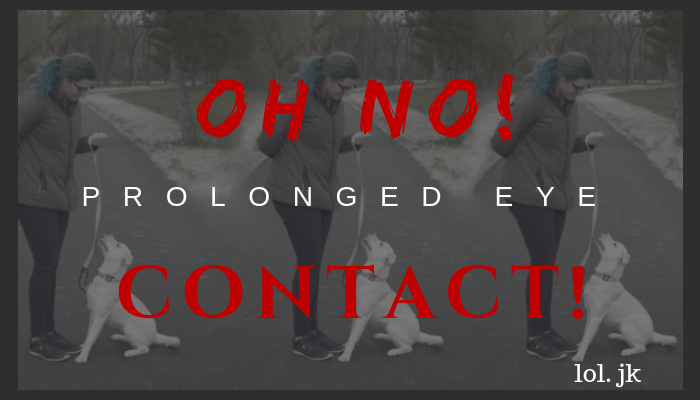Top 12 Ways to Tell if Your Dog Is Dominant
If I had a penny for every time I heard someone describe a dog as dominant, I’d be a millionaire. Dominance is a term that everyone thinks they understand, but the use of the word itself is highly dependent on the user. The top twelve reasons people use the word are as follows:
- Guarding you from other animals.
- Guarding you from other people.
- Growling when you remove something from their mouth.
- Aggression when you remove something from their mouth.
- Growling/Posturing when someone says “No!” or from using other corrections.
- Becoming aggressive to people or dogs from prolonged eye contact.
- Trying to herd you or others by nipping at your heels.
- Guarding the couch from others through displays of aggression.
- Guarding specific rooms.
- Excessive/inappropriate mounting.
- Does not follow your commands even though they “know” the commands.
- Random episodes of aggression.
Every single one of these reasons have been given the label “Dominant” by owners, dog trainers, and even veterinarians. But how do so many behaviors that seem unrelated be from the same issue? And so the confusion begins.
Why is one dog being dominant when they don’t listen, and the other one is “just being a puppy?” And why does one dog in the same house protect the couch, while the other one protects food? Aren’t they both being dominant? Who is actually the “alpha”?
I could go into all the dynamics and why dominance theory is outdated and how the original researchers have denounced their own theory. But I’m not going to bore you with the details. Instead I’m going to go over why each of these so-called reasons for “Dominance” is a dog-to-human misunderstanding.
- She guards you from other animals/people. – This behavior is known as resource guarding and is often misinterpreted as dominance. Some dogs form a very strong bond with their people and can in fact over-bond with them. There are many ways you can accidentally reinforce your dog to begin over bonding. Learn how to begin reversing the process: “Why is My Dog Over-bonded?“
- Growling/Aggression when you remove something from their mouth – Often misunderstood as “Dominance” this is actually a problem with the human’s behavior. People often can get away with taking things out of their puppy’s mouth (like stealing candy from a baby, they’re pretty helpless to do anything about it). But as the dog matures they begin to realize that what you are doing is not very nice, so they warn you by growling. If you ignore that polite warning they will escalate their behavior. Problems arise very quickly when people choose to ignore those warnings, that’s when people get bit and dogs get put down. Respect the warnings and TRADE for a high value item that you are OK with your dog having. If you can’t even do that it is very much the time to call a professional force-free dog trainer.
- Growling/Posturing to “No!” and other corrections – This happens when you have taught your dog not to trust you. Many people rely on an excessive amount of corrections. This is especially common when people use corrections in the name of “training.” Be careful who you choose to hire. You can begin to repair your relationship by switching to 100% Positive Reinforcement training. This is easier said than done however. If corrections and yelling “NO!” at the dog, kids, spouse, and co-workers is commonplace in a person’s life it makes training themselves out of the habit very difficult. Enlist the help of a force-free trainer to not just train the dog, but help train you and your family instill new habits. Everyone will be safer for it.

- Becoming aggressive from prolonged eye contact – How do I best explain this one? Dog’s that give a “hard stare” are communicating that s*** is going down if you don’t back off. This can often happen when they are stressed, guarding something, or just generally want to be left alone. Let the laying dog lie and find ways that make them elicit more relaxed behavior. Some of my favorite tools to use are my remote treat trainers to help solve this problem.
- Trying to herd you or others – It’s amazing what some people can consider dominance. Herding is a skill that many breeds are supposed to do. But what they herd needs to be taught early on in life. If they’ve never been given the opportunity to herd sheep, what alternative do they have other than to find children, dogs, or even your backyard chickens to practice on? Luckily you can teach them what not to herd even if they’re older, but it will take a little more practice and persistence on your part.
- Guarding the couch from others – Often confused with dominance, resource guarding can apply to anything that the dog finds value in. Sometimes the easiest solution to this problem is by not allowing your dog onto the couch. If she jumps up to snuggle but you know a fight will break out at some point, get your dog off the couch by standing up and saying “Off” at the exact same time you stand up. Chances are they just want to be with you and if they see you leaving they’ll happily jump off to follow. If this doesn’t work look into hiring a local force free dog training or dog obedience professional. When choosing a trainer it is important that you two “click” before deciding to choose their services.
- Guarding specific rooms – This falls into the above category of “Resource Guarding.” Call a professional for such a case as room guarding.
- Excessive/inappropriate mounting – Happy Hump Day! Dogs mount/hump for many reasons. The most common reason I run into is as a way to release excessive energy, often occurring during play. This is not dominance but a cue that perhaps your dog needs more vigorous exercise during the week to accommodate for such excitement. Hiring a dog walker to run with your dog, hitting the hiking trails, and my personal favorite: teaching them to love running on a dog bike attachment. If your dog must stay indoors (due to aggression, reactivity, or other issues) there are also great automatic ball throwers that are cheaper than you think.
- Does not follow your commands – Well this is just silly. Who actually believes this one? Just because a dog doesn’t listen doesn’t mean they are being “Dominant.” Day in and day out dogs do not follow my requests and it is for many reasons. Often it is due to having a low threshold for working around distractions. Other times they could be ill and actually feel bad. But as a responsible owner I don’t blame the dog, I change the environment to make my dogs successful. I do that by reducing the distractions (before adding them back in later when my dog is better prepared) or taking them to the vet if they don’t feel well. It’s that easy!
- Random episodes of aggression – If your dog is having “random” episodes of aggression they need to see a vet NOW. Pain is a huge contributing factor leading to growls, barks, and bites. However, if you have already thoroughly discussed everything with a veterinary professional and have only seen minimal changes, it time to call a force free dog behavior professional. Behavior problems are never “random” when they are developing. When I hear a client tell me this it means that they “don’t know why” their dog is having problems. A good place to start is by understanding dog body language to prevent problems before they arise.
- But my dog is healthy and went through an aggression “rehab” program. He still attacks randomly! – If your dog’s aggression rehab program used punishing methods (flooding the dog, shocking, choking, and scaring he dog) you should expect a “randomly” biting animal. These programs focus on reducing aggressive warning signs, signs that your dog is about to bite. Your program did what they advertised, they punished aggressive behavior, they did not teach your dog to show happy and relaxed behavior. Now is the time to find a behavior specialist from the Pet Professional Guild to truly rehab your wild child.
Have a Question About Your Dog? Here’s Your Chance!
[contact-form][contact-field label=”Name” type=”name” required=”true” /][contact-field label=”Email” type=”email” required=”true” /][contact-field label=”Website” type=”url” /][contact-field label=”Message” type=”textarea” /][/contact-form]
If you learned something from this blog please consider subscribing and signing up for updates. (c) Caitlins Animal Training 2018

